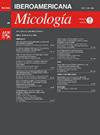今天在实验室诊断侵袭性真菌感染:这都是好消息吗?
IF 1.6
4区 生物学
Q4 MYCOLOGY
引用次数: 0
摘要
尽管医学进步,侵袭性真菌感染(IFI)仍然是一个诊断挑战。免疫抑制疗法、重症监护技术的进步和新出现的病原体推动了IFI患病率的上升,这凸显了早期准确诊断的必要性。这篇综述评估了目前诊断IFI的实验室方法,强调了它们的优势和局限性。传统技术,包括真菌培养、直接显微镜和组织病理学,仍然是确诊ifi的金标准。这些方法允许病原分离、物种鉴定和抗真菌药敏试验。然而,这些技术在灵敏度和周转时间方面有局限性。虽然显微镜是一种快速的技术,但它的灵敏度和物种识别谱是有限的。现代血清学检测,如β-d-葡聚糖和半乳甘露聚糖检测,提高了可能的IFI病例的诊断准确性。将这些检测与临床和放射学结果相结合,可以进行早期干预,尽管这伴随着假阳性的风险增加,需要仔细的临床相关性。分子诊断,特别是聚合酶链反应(PCR),允许直接从临床样品中快速、物种特异性鉴定。MALDI-TOF质谱法的出现进一步提高了诊断效率,特别是在酵母鉴定方面,尽管丝状真菌仍然存在挑战。创新技术,如宏基因组测序、横向流动测定和环介导等温扩增,即使在资源有限的情况下,也有可能实现快速、精确的检测。传统和创新方法的结合提供了一个全面的诊断框架。结合多学科合作,不断完善这些工具对于改善IFI患者的早期诊断和靶向治疗至关重要。本文章由计算机程序翻译,如有差异,请以英文原文为准。
Diagnosing invasive fungal infections in the laboratory today: It's all good news?
Despite the advances in medical science, invasive fungal infections (IFI) remain a diagnostic challenge. The increasing prevalence of IFI, driven by immunosuppressive therapies, advances in intensive care and emerging pathogens, underscores the need for early and accurate diagnosis. This review evaluates current laboratory methods for the diagnosis of IFI, highlighting their strengths and limitations.
Conventional techniques, including fungal culture, direct microscopy, and histopathology, remain the gold standard for the diagnosis of proven IFIs. These methods allow pathogen isolation, species identification and antifungal susceptibility testing. However, these techniques have limitations in terms of sensitivity and turnaround times. Although microscopy is a rapid technique, its sensitivity and species discrimination profile are limited.
Modern serological assays, such as β-d-glucan and galactomannan detection, have improved the diagnostic accuracy of probable IFI cases. Integration of these assays with clinical and radiological findings, enables earlier intervention, although this is accompanied by an increased risk of false positives and necessitates careful clinical correlation. Molecular diagnostics, particularly polymerase chain reaction (PCR), allow rapid, species-specific identification directly from clinical samples. The advent of MALDI-TOF mass spectrometry has further improved diagnostic efficiency, particularly for yeast identification, although challenges remain for filamentous fungi.
Innovative techniques, such as metagenomic sequencing, lateral-flow assays, and loop-mediated isothermal amplification, offer the potential for rapid and precise detection, even in resource-limited settings. The combination of conventional and innovative methods provides a comprehensive diagnostic framework. The continuous refinement of these tools, in conjunction with multidisciplinary collaboration, is imperative to improve the early diagnostic and targeted treatment of patients with IFI.
求助全文
通过发布文献求助,成功后即可免费获取论文全文。
去求助
来源期刊

Revista Iberoamericana De Micologia
MYCOLOGY-
CiteScore
1.90
自引率
0.00%
发文量
17
审稿时长
81 days
期刊介绍:
Revista Iberoamericana de Micología (Ibero-American Journal of Mycology) is the official journal of the Asociación Española de Micología, Asociación Venezolana de Micología and Asociación Argentina de Micología (The Spanish, Venezuelan, and Argentinian Mycology Associations). The Journal gives priority to publishing articles on studies associated with fungi and their pathogenic action on humans and animals, as well as any scientific studies on any aspect of mycology. The Journal also publishes, in Spanish and in English, original articles, reviews, mycology forums, editorials, special articles, notes, and letters to the editor, that have previously gone through a scientific peer review process.
 求助内容:
求助内容: 应助结果提醒方式:
应助结果提醒方式:


